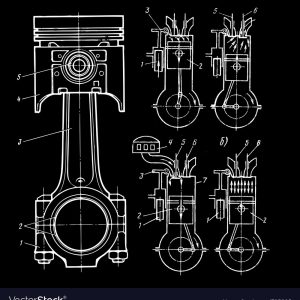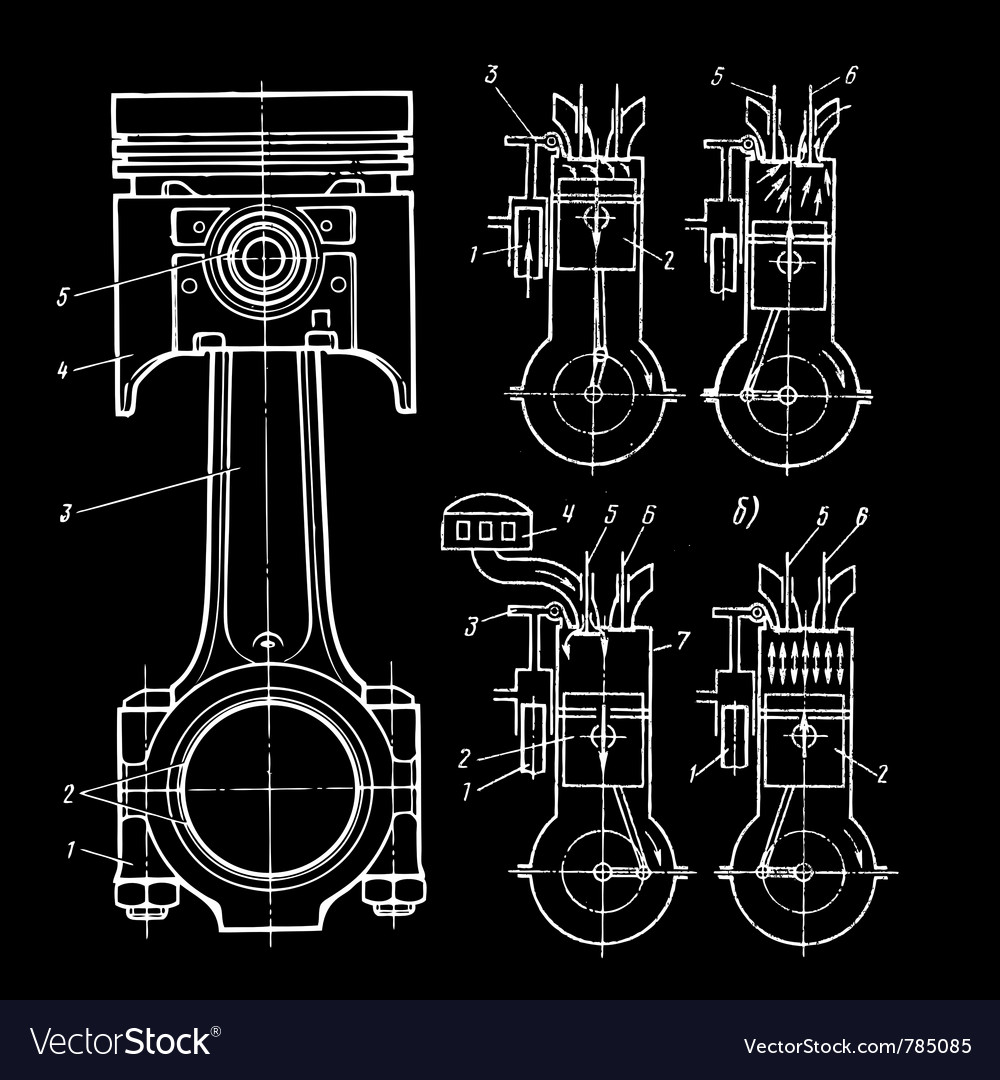
The Importance of Vector Graphics Images
Exclusive vector art images Blueprint. Vector graphics images play a significant role in various industries, including graphic design, advertising, and web development. Unlike raster images, which are made up of pixels, vector images are composed of lines and curves, allowing for scalability without any loss of quality. This makes them ideal for creating logos, icons, illustrations, and other design elements that need to be resized frequently. Additionally, vector graphics images can be easily edited, manipulated, and customized, making them highly versatile for creative projects.
The importance of vector graphics images lies in their ability to provide crisp and clear visuals across different platforms and media. Whether it’s for print or digital media, vector images maintain their sharpness and clarity, even when zoomed in or resized. This not only enhances the visual impact of the design but also ensures that the intended message or information is effectively communicated to the audience. Moreover, vector images are relatively smaller in file size compared to raster images, making them easier to upload, download, and load on websites or in applications. With their flexibility, scalability, and efficiency, vector graphics images have become an essential tool for designers and artists in achieving high-quality visual results.
Understanding the Basics of Vector Art Images
Vector art images are a fundamental component of design. They are created using mathematical equations and points, allowing for scalability without any loss of quality. Unlike raster images, vector art images can be scaled up or down to any size without pixelation or blurriness. This scalability makes them incredibly versatile for various applications, such as logos, illustrations, and print materials.
The key characteristic of vector art images is their use of lines, curves, and shapes to create a visual representation. These images are created using vector-based software, which allows designers to manipulate anchor points and control the direction and curvature of lines and shapes. This level of control gives designers the freedom to create intricate and detailed artwork, resulting in clean, crisp lines and smooth gradients. With vector art images, precision and accuracy are easily achieved, making them an essential tool for graphic designers in creating professional and visually appealing designs.
Exploring the Versatility of Vektor Art
Vector art is a highly versatile form of digital graphics that offers numerous creative possibilities. With vektor art, designers have the ability to scale their images without losing any quality, making it perfect for both small-scale designs and large-format prints. Whether it’s a logo, illustration, or icon, vektor art has the flexibility to adapt to different sizes and resolutions, ensuring that the integrity of the image remains intact.
In addition to scalability, vektor art also allows for easy manipulation of shapes, colors, and gradients. Designers can effortlessly modify and edit elements within their artwork, giving them complete control over every aspect of the design. This versatility makes vektor art a popular choice for graphic designers, illustrators, and artists who require flexibility and precision in their work. From complex illustrations to simple geometric shapes, vektor art provides the tools necessary to bring various creative ideas to life.
A Step-by-Step Guide to Creating Palm Tree Vector Images
To create a palm tree vector image, begin by launching your preferred vector graphics software. Adobe Illustrator and CorelDRAW are two commonly used platforms in the design industry. Once the software is open, set up a new document with the desired dimensions and resolution for your project.
Next, use the shape tools to create the outline of the palm tree trunk. Start by drawing a vertical rectangle for the trunk. Adjust the size and proportions to fit your vision. Then, utilizing the curvature tool or pen tool, create the curves and lines that form the branches and leaves of the palm tree. Don’t forget to consider the perspective and angle of the branches to achieve a realistic look.
After completing the basic structure of the palm tree, proceed to add details such as the texture of the trunk and the intricate patterns on the leaves. Use the fill and stroke options to choose suitable colors and thickness for each element of the palm tree vector image. Additionally, experiment with gradients and transparency settings to enhance the visual appeal of your artwork. Remember to save your progress regularly to avoid losing any changes made.
Tips and Tricks for Designing Stunning Vector Art
Vector art is a powerful medium for creating stunning and visually appealing designs. To make the most out of your vector art creations, here are some valuable tips and tricks to keep in mind. Firstly, it is crucial to start with a solid plan and sketch your design before diving into the digital realm. By outlining your ideas on paper first, you can have a clear vision of what you want to achieve. This will save you time and effort when it comes to refining and fine-tuning your vector art.
Another invaluable tip is to utilize layers effectively. By organizing your artwork into different layers, you can easily manage and edit specific elements without affecting the rest of the design. This allows for greater flexibility and experimentation, enabling you to make adjustments seamlessly. Furthermore, using layers can enhance your workflow and make the overall design process more efficient.
Mastering the use of anchor points is also essential for creating stunning vector art. By manipulating anchor points with precision, you can achieve smoother curves, sharper angles, and more precise lines. This level of control over your artwork contributes to its overall aesthetics and helps you convey your artistic intent effectively. Experiment with modifying anchor points to create unique shapes and contours, giving your vector art a distinctive and captivating style.
Common Mistakes to Avoid When Working with Vector Graphics Images
One of the most common mistakes to avoid when working with vector graphics images is not understanding the concept of scalability. Vector images are resolution-independent, meaning they can be scaled up or down without losing any quality. However, many beginners make the mistake of treating vector images like raster images, which have a fixed resolution. This can lead to blurry or pixelated graphics when the vector image is scaled up beyond its original size. To avoid this, always make sure to create or use vector images that are appropriately sized for the intended use and adjust the scale proportionally.
Another mistake to avoid is neglecting to organize and label your vector layers properly. When working on complex vector projects with numerous layers, it’s crucial to keep things organized for easy editing and efficient workflow. Failing to label layers or grouping them in a confusing manner can make it challenging to make changes or find specific elements later on. Take the time to name your layers descriptively and consider grouping related layers together. This simple organizational practice will not only save you time but also ensure that your vector graphics images are well-managed and easy to update when needed.
How to Choose the Right Software for Creating Vector Art Images
When it comes to creating vector art images, choosing the right software is crucial. With a plethora of options available in the market, it can be overwhelming to make a decision. However, considering a few key factors can help streamline the selection process. Firstly, it is important to assess your skill level and familiarity with vector design software. If you are new to vector art, opting for a user-friendly software with a simple interface and intuitive tools can be beneficial. On the other hand, if you are an experienced designer looking for advanced features and functionalities, opting for a software with a steep learning curve might be a more suitable choice.
Another important aspect to consider when choosing the right software for creating vector art images is the compatibility with your operating system. Make sure to select a software that is compatible with your preferred platform, whether it is Windows, macOS, or Linux. Additionally, consider the file formats supported by the software, as it will determine the flexibility and ease of sharing your creations with others.
Lastly, take into account your budgetary constraints. While there are both free and paid options available, it is essential to strike a balance between your requirements and financial considerations. By evaluating your skill level, platform compatibility, file format support, and budget, you can make an informed decision and choose the right software for creating vector art images that aligns with your needs and creative vision.
The Role of Vector Graphics in Modern Design
Vector graphics play a crucial role in modern design, offering flexibility and scalability that traditional raster images cannot match. With the ability to maintain sharpness and clarity regardless of size, vector graphics are ideal for various design applications. From logos and icons to illustrations and typography, vector graphics provide designers with the freedom to create sleek, professional visuals that can be used across different platforms.
One of the key advantages of vector graphics in modern design is their ability to be easily edited and modified without compromising quality. Designers can manipulate individual elements of a vector image, such as changing colors, adjusting shapes, or resizing without loss of clarity. This flexibility allows for seamless experimentation and refinement, enabling designers to achieve the desired look and feel of their designs.
Additionally, vector graphics are also compatible with various software and devices, making them versatile and accessible for designers in the digital age.
• Vector graphics offer flexibility and scalability that traditional raster images cannot match.
• They maintain sharpness and clarity regardless of size, making them ideal for various design applications.
• Vector graphics are commonly used for logos, icons, illustrations, and typography.
• Designers have the freedom to create sleek and professional visuals that can be used across different platforms.
• One key advantage is the ability to easily edit and modify vector graphics without compromising quality.
• Elements such as colors, shapes, or sizes can be manipulated without loss of clarity.
• This allows for seamless experimentation and refinement in achieving desired designs.
• Vector graphics are compatible with various software and devices, making them versatile in the digital age.
Exploring Different Applications of Vektor Art
Vector art is an incredibly versatile medium that has a wide range of applications in various industries. One of the primary areas where vector art is widely used is in graphic design. Designers can create stunning logos, icons, and illustrations with vector art, thanks to its ability to maintain sharpness and scalability. Additionally, vector art is often used in advertising and marketing materials to create eye-catching visuals that effectively convey messages to target audiences.
Another field that greatly benefits from vector art is animation. With vector graphics, animators can easily manipulate and transform the images to create smooth and seamless movements. This makes vector art an excellent choice for creating dynamic and engaging animations for films, video games, and even marketing videos. The scalability of vector images also ensures that the quality of the animations remains consistent across different platforms and screen sizes.
Inspiring Examples of Palm Tree Vector Images in Design
Palm trees have long been symbolic of relaxation, tropical getaways, and exotic locations. When it comes to incorporating them into design, palm tree vector images can add a touch of paradise and serenity to any project. These vector graphics are created using mathematical equations and are resolution-independent, meaning they can be scaled to any size without losing quality.
One inspiring example of a palm tree vector image in design is the use of these graphics in travel brochures. The vibrant colors and detailed shapes of palm trees can instantly transport viewers to a tropical paradise, enticing them to book their next vacation. Additionally, palm tree vector images can be found on various merchandise such as t-shirts and mugs, adding a sense of coastal charm and leisure to everyday items. Designers can also use these vector graphics in digital illustrations, creating captivating and immersive scenes that capture the essence of a beachfront paradise.



